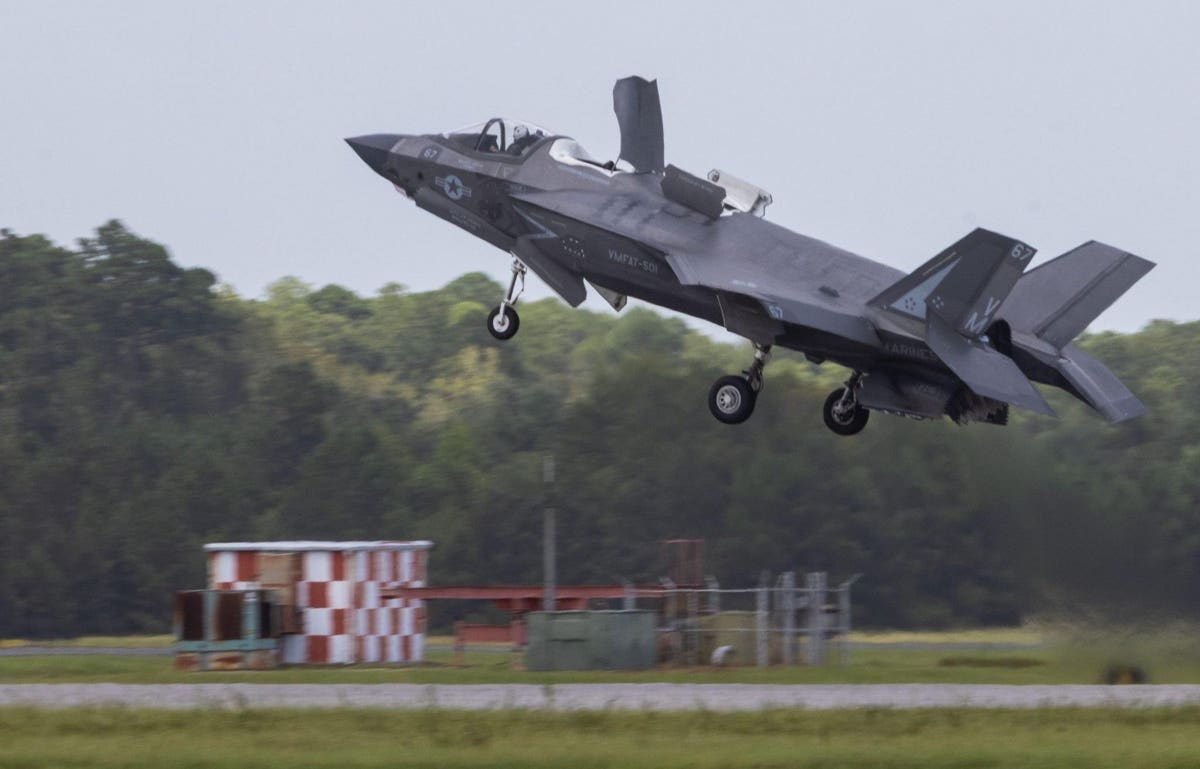The Marines have what’s left of their lost F-35 back and happily no one was hurt. But many questions surround the mishap including how the pilot-less stealth fighter flew 50 to 60 miles at low altitude.
Late Monday, Joint Base Charleston issued a release confirming that search teams had located a debris field in Williamsburg County, South Carolina, two hours northeast of the base which is co-located with Charleston International Airport (CHS).
Tuesday morning, an ABC News report included audio from an unidentified source, presumably one of the search teams, saying, “We may or may or may not have found it. Burn crews are currently searching it, there’s not much of it left.”
ABC reported that the debris/crash site was found approximately 60 miles north of Charleston by a South Carolina law enforcement helicopter.
According to an unnamed Marine Corps official who spoke with ABC News, the pilot ejected from the F-35 at an altitude of approximately 1,000 feet “and one mile north of the Charleston International Airport.” The pilot then parachuted safely into a residential backyard.
The information regarding the altitude at the time of ejection and the location thereof is surely interesting. According to USNI News, the F-35 took off from Marine Corps Air Station Beaufort where VMFAT-501 is based, about 42 miles by air southwest of Charleston Interational-Joint Base Charleston.
While it’s not clear if the jet flew somewhere else prior to heading for Charleston, its altitude at the time of the mishap (1,000 feet is generally the landing-pattern altitude for such an airport) suggests the pilot was practicing landing approaches or touch-and-go landings at CHS. In that event, the stealth fighter would likely have had ample fuel to make the short hop back to MCAS Beaufort.
The airplane was low and logically flying relatively slow, probably under 200 knots. The F-35B can certainly fly slowly, all way down to zero forward speed if it’s doing a VTOL landing. Standard landing approaches are based on 13 degrees angle of attack which can be very slow according to a highly informed source I spoke with.
So the low and slow F-35B was in the airport pattern and something happened suddenly. The reported ejection one mile north of the airport put the Lightning II over a highly populated area with many homes when the pilot punched out. This suggests he urgently wanted out of the fighter – urgently enough to leave the aircraft while it was over homes (he parachuted into a backyard).
The source I spoke with referred to the punch-out as a likely “controlled ejection”. That means the pilot had at least marginal control of the jet, probably that it was in a wings-level normal attitude. The fact that it flew a further 60 or so miles north would seem to back that assumption up.
And yet, former Lockheed Martin F-35 test pilot, Billie Flynn, told USNI News on Monday it was unlikely that the aircraft flew long after the pilot ejected.
On the other hand, the source I spoke with opined that a pilotless F-35 could go a long way with a relatively low fuel flow rate. But the crash location, the stealth fighter’s low altitude, slow speed and probable wings-level attitude are hard to square up.
Assuming it was flying at somewhere around 150 knots (172 mph), it apparently flew without a pilot for approximately 20 minutes to cover the distance to its crash site. Allowing for a higher 200-knot (230) flying speed, the Marine fighter would still have been a ghost jet for about 15 minutes.
Possibly, the pilot left the F-35 on autopilot. Certainly, the fact that it flew for such a time and distance at such a low altitude would indicate that it was relatively stable and not immediately in jeopardy of falling from the sky. That begs the question of why the trained Marine at the controls elected to leave over a populated area?
The Marine Corps isn’t offering any answers. I put a number of additional questions to Captain Joe Leitner, USMC Deputy Director Communication Strategy & Operations at the 2nd Marine Aircraft Wing, yesterday ranging from whether the F-35B’s transponder or ADSB-Out was functioning to what the airplane was doing in the air around Joint Base Charleston and whether there were eyewitnesses to the ejection nearby on the ground or in the air. (One would expect so around a large airport.)
There has been no response as yet. Why the F-35B’s pilot ejected and how it managed to fly for what appears to be a considerable amount of time at altitudes around or below 1,000 feet (did air traffic control alert local air traffic?) are mysteries to add to the military’s self-described inability to find the aircraft.
There are possible explanations for what happened but pinning the incident on one or another is pure speculation at this point. Nevertheless, it’s interesting to observe that the aeronautical chart for Charleston International-Joint Base Charleston includes a note cautioning that migratory bird season is in effect from 1-15 April and 1 August through 30 November.
One thousand feet above the ground is a pretty common flight level for migratory birds.
Read the full article here





